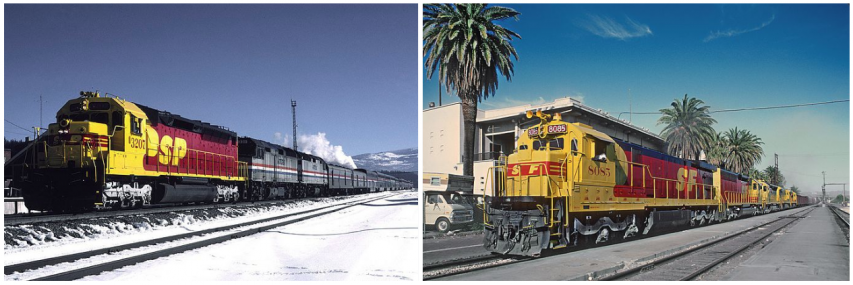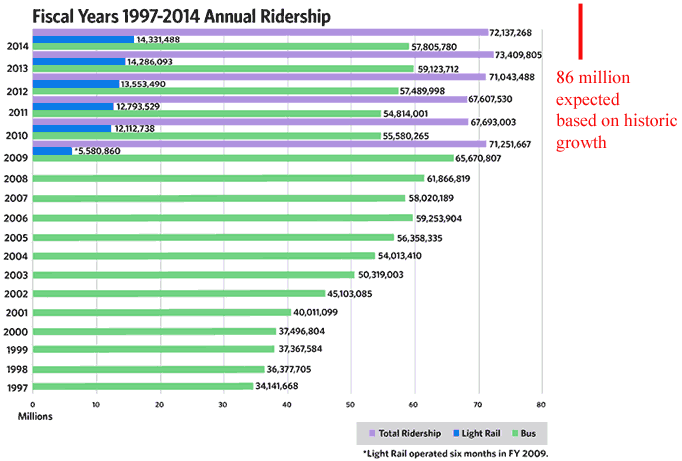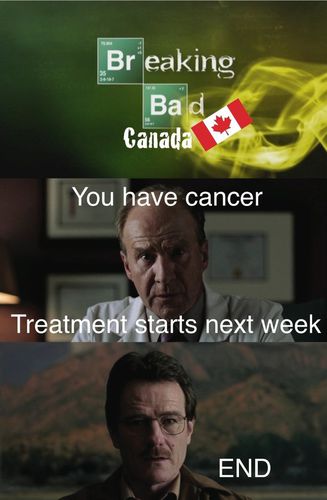World War Two
Published 20 Jul 2024This week the Americans explode a nuclear bomb at the Trinity Test in New Mexico. The plan is to possibly use more such bombs against targets in Japan. US President Harry Truman is meanwhile in Germany for the Potsdam Conference with other Allied leaders to hammer out some details of the postwar global order. The active war continues, of course, in Burma, Borneo, the Philippines, and China, with the Japanese being defeated everywhere.
00:00 Intro
00:22 Recap
00:51 The Trinity Test
02:46 The Potsdam Conference Begins
04:09 Bretton Woods Agreement
05:38 The Active War Continues
09:39 Summary
11:00 Conclusion
(more…)
July 21, 2024
The Atomic Age Begins! – WW2 – Week 308 – July 20, 1945
October 27, 2023
The Tale of Fat Man and Little Boy
World War Two
Published 26 Oct 2023Here near the end of 1944, we look at the development of the atomic bomb. What different methods of creating a nuclear reaction are being developed? How close are they to development? How does it work? Will they be able to make one in 1945? Will it go boom?
(more…)
October 5, 2023
The Soviet Spies who Kickstarted the Nuclear Arms Race
World War Two
Published 4 Oct 2023Last episode we saw Klaus Fuchs steal details of the American atomic bomb for the Soviet Union. But he’s only one component of a much bigger conspiracy. Today, Astrid introduces you to the mysterious web of Soviet atomic spies. Their work changed our world forever.
(more…)
September 30, 2023
The Man Who Stole the Atomic Bomb
World War Two
Published 29 Sep 2023In the New Mexico desert, a secret team of scientists is working flat out to develop atomic bombs. It’s the most important American military project in history. But one of those scientists lives a double life. Klaus Fuchs has decided to betray his country and share America’s most secret technology with the Soviet Union. But is he the only person who has turned traitor?
(more…)
May 8, 2020
Fallen flag — the Atchison, Topeka & Santa Fe Railway
This month’s fallen flag article for Classic Trains is the story of the Atchison, Topeka & Santa Fe Railway by George Drury:
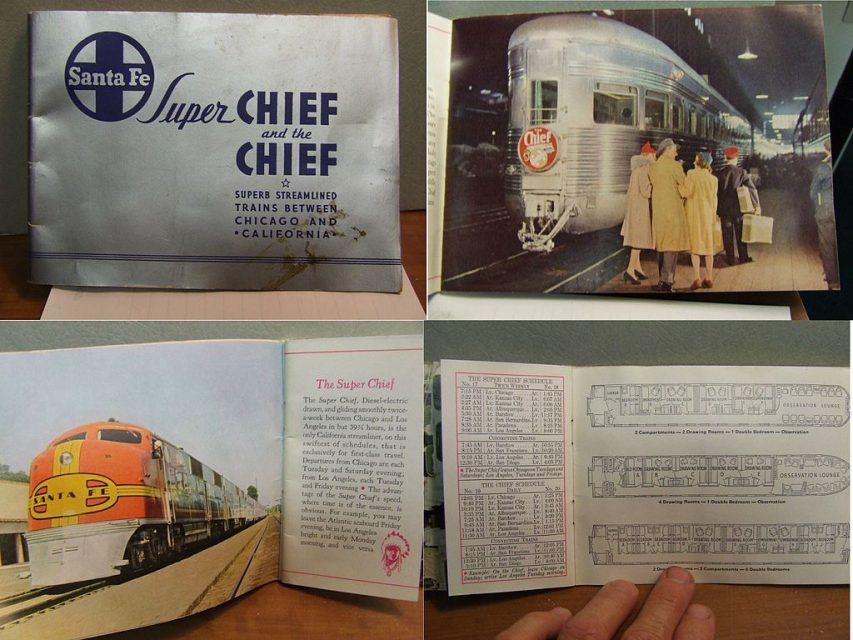
Pages from a circa 1937 booklet about the Santa Fe trains The Chief and the Super Chief. The railroad was showcasing the streamlined changes made to its main Chicago to California trains. Super Chief had given up its boxcab locomotives for EMC E1 units. Chief was no longer pulled by the “Blue Goose” steam locomotive, but by EMD diesel locomotives.
Wikimedia Commons.
The Atchison & Topeka Railroad was chartered in 1859 to join the towns of its title and continue southwest toward Santa Fe, New Mexico.
“Santa Fe” was added to the corporate name in 1863. Construction started in 1869; by the end of 1872 the railroad extended to the Kansas-Colorado border, opening much of Kansas to settlement and carrying wheat and cattle east to markets. The railroad temporarily set aside its goal of Santa Fe — once the trading capital of the Spanish colony in that area — and continued building west, reaching Pueblo, Colorado, in 1876, just in time for the silver rush at Leadville, Colorado.
In 1878, the railroad resumed construction toward Santa Fe, building southwest from La Junta to Trinidad, Colorado, then south over Raton Pass. It chose that route instead of an easier route south across the plains from Dodge City because of Native American attacks and a lack of water on the southerly route and coal deposits near Trinidad, Colorado, and Raton, New Mexico.
The Denver & Rio Grande was also aiming at Raton Pass, but Santa Fe crews arose early one morning in 1878 and were hard at work with picks and shovels when the Rio Grande crews showed up after breakfast. At the same time the two railroads skirmished over occupancy of the Royal Gorge of the Arkansas River west of Canon City, Colorado; the Rio Grande won that battle.
The Santa Fe reached Albuquerque, New Mexico, in 1880 (because of geography the city of Santa Fe found itself at the end of a short branch from Lamy, New Mexico) and connected with the Southern Pacific at Deming, New Mexico, in 1881. The Santa Fe then built southwest from Benson, Arizona, to Nogales, on the Mexican border. There it connected with the Sonora Railway, which Santa Fe interests had constructed north from the Mexican port of Guaymas.
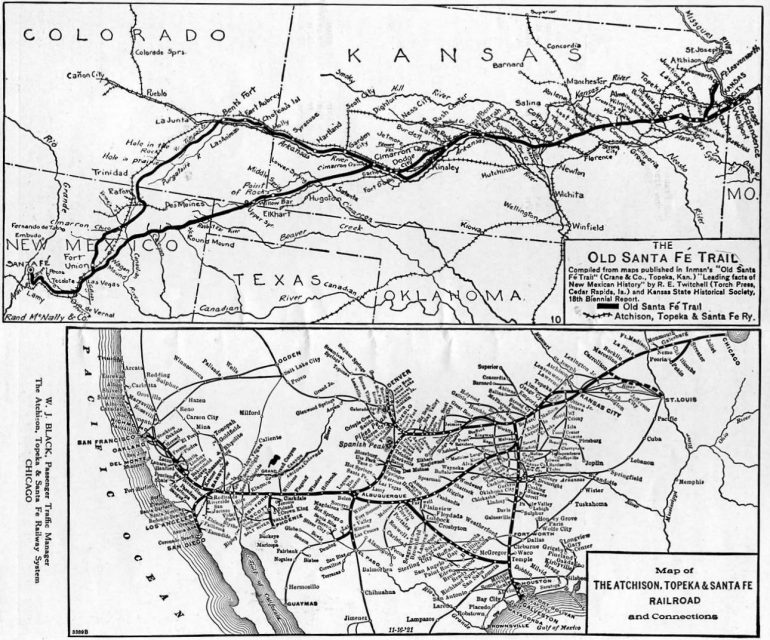
Comparison map showing the Santa Fe Trail and the ATSF Railway, 1922.
Map from By the Way – A condensed guide of points of interest along the Santa Fe lines to California, Rand McNally and Company via Wikimedia Commons.
In 1960 the Santa Fe bought the Toledo, Peoria & Western Railroad, then sold a half interest to the Pennsylvania Railroad. The TP&W cut straight east across Illinois from near Fort Madison, Iowa, to a connection with the Pennsy at Effner, Indiana, forming a bypass around Chicago for traffic moving between the two lines. The TP&W route didn’t mesh with the traffic pattern Conrail developed after 1976, so Santa Fe bought back the other half, merged the TP&W in 1983, then sold it back into independence in 1989.
During the 1960s the Santa Fe explored merger with the Frisco and the Missouri Pacific with no success. By 1980 Santa Fe, which had been the top railroad in route mileage in the 1950s, was surrounded by larger railroads. It was well managed and profitable, and it had the best route between the Midwest and Southern California, but its neighbors were larger, and friendly connections had been taken over by rival railroads. Southern Pacific was in the same situation. In 1980 Santa Fe and SP proposed merger. Approval seemed certain, but in 1986 the Interstate Commerce Commission denied permission because the merger would create a railroad monopoly in New Mexico, Arizona, and California.
The Santa Fe, suddenly the smallest of the Super Seven freight railroads, began spinning off branches and secondary lines and became primarily a conduit for containers and trailers moving between the Midwest and Southern California. In June 1994 Santa Fe and Burlington Northern announced their intention to merge — BN would buy Santa Fe. The deal was consummated in 1995, forming the Burlington Northern Santa Fe, known today as BNSF Railway.
The denied merger between the Southern Pacific and the Santa Fe included an eye-catching proposed “Kodachrome” paint scheme for locomotives, as described in the Wikipedia article:
The holding company controlled all the rail and non-rail assets of the former Santa Fe Industries and Southern Pacific Company, and it was intended that the two railroads would be merged. They were confident enough that this would be approved that they began repainting locomotives into a new unified paint scheme, including the letters SP or SF and an adjacent empty space for the other two (as SPSF, the reverse order of the holding company).
The locomotive livery featured the Santa Fe’s Yellowbonnet with a red stripe on the locomotive’s nose; the remainder of the locomotive body was painted in Southern Pacific’s scarlet red (from their Bloody Nose scheme) with a black roof and black extending down to the lower part of the locomotive’s radiator grills. The numberboards were red with white numbers. In large block letters within the red portion of the sides was either “SP” (for Southern Pacific-owned locomotives) or “SF” (for Santa Fe-owned locomotives). The lettering was positioned on the locomotive sides so that the other half of the lettering could be added after the merger became official. Two ATSF EMD SD45-2s (ATSF #7219 and #7221) were painted with the full SPSF lettering to show what the unified paint scheme would look like after the merger was complete. One Santa Fe caboose was also painted with “SPSF” in a similar situation.
This paint scheme, combining yellow, red and black, has come to be called the Kodachrome paint scheme due to the colors’ resemblance to those on the boxes that Kodak used to package its Kodachrome slide film (which was heavily used by railfans of the time). After the ICC’s denial, railroad industry writers, employees of both railroads and railfans alike joked that SPSF really stood for “Shouldn’t Paint So Fast”.
June 16, 2015
Light rail is usually not the solution you need for better public transit
At Coyote Blog, a look at the new Phoenix light rail system’s miraculous ability to stall the growth in public transit usage:
As I have written before, Phoenix has seen its total transit ridership flat to down since it built its light rail line. This after years of 6-10% a year increases in ridership. Most cities, even the oft-worshipped Portland, has seen the same thing. Here is the chart for Phoenix (if you look closely, you can see how they fudged the bar scaling to make light rail ridership increases look better).
The reason is that per passenger, or per mile, or per route, or whatever way you want to look at it, rail systems are 1-2 orders of magnitude more expensive than buses. Since most cities are reluctant to increase their spending on transit 10-100x when they build trains (and to be fair, proponents of rail projects frequently make this worse by fibbing about future costs and revenue expectations), what happens is that bus routes are cut to fund rail lines. But since buses are so much cheaper, 10 units of bus capacity, or more, must be cut for each one unit of rail capacity.
[…]
By the way, beyond the obvious harm to taxpayers, the other people hurt by this are the poor who are disproportionately bus users. Rail systems almost always go from middle/upper class suburbs to business districts and seldom mirror the transit patterns of the poor. Middle class folks who wouldn’t be caught dead on a bus love the trains, but these same folks already have transportation alternatives. The bus lines that get cut to fund the trains almost always serve much lower income folks with fewer alternatives.
This comment from slocum may show the hidden intent in many cities’ drive to replace bus routes with light rail services:
BTW, am I the only one who suspects that there might be a little method to the madness of building light rail and cutting back on bus service? Isn’t it a pretty effective way to drive gentrification by making cities more attractive to the well-off and less so to the poor?
Come for the shiny new light rail system. Stay for the snobbery and active shunning of the poor!
May 5, 2014
The Constitution-free zone near the US border
A recent decision by a federal appeal court expands the already very broad opportunities for police and border agents to stop and search travellers near the US border:
A federal appeals court just ruled that the police have a legal right to stop, search and arrest you for innocent behavior including driving with your hands at the ten-and-two position on the steering wheel at 7:45 p.m., taking a scenic route and having acne.
To the Tenth U.S. Circuit Court of Appeals, these factors added up to fit the profile of a person smuggling undocumented immigrants and drugs. The court said, “Although the factors, in isolation, may be consistent with innocent travel … taken together they may amount to reasonable suspicion.”
In other words, the police can now stop you for no reason at all. Law enforcement just needs to add a sinister context to your behavior, and off you go to jail. The court endorsed this expansion of aggressive police behavior in USA v. Cindy Lee Westhoven, No. 13-2065.
[…]
Incredibly the court found that this scenario created a reasonable suspicion for an “investigative stop.” By inserting a context that would make every driver guilty, the court upheld this belligerent law enforcement:
The officer said he spotted the car because “her arms were ‘straight and locked out’ at a ‘ten-and-two position on the steering wheel,’ — as everyone is taught in driver’s ed in high school. He was also suspicious because the road was used primarily by locals in New Mexico, and Westhoven had Arizona plates. She had acne scarring, “indicating to him she might be a methamphetamine user.” He also thought the shopping was better in Tucson than Douglas, so this was also “suspicious.”
“The dark tinted windows on Ms. Westhoven’s truck raised Agent Semmerling’s suspicion that she might be concealing something or someone in the back of her truck,” the court added.
The time happened to be between a 6-to-8 p.m. border patrol shift change, and the cop inferred that Westhoven was a smuggler trying to exploit that two-hour window. Westhoven was nervous, taking long pauses and shaking — which apparently signaled criminality.
The final nail for Westhoven was that she had two cell phones visible in the car. The cop said this was a common practice for drug smugglers. It is also common for people who have a business phone and a personal phone.
September 15, 2013
April 21, 2013
Gary Johnson on legalizing marijuana
Former New Mexico governor and Libertarian presidential candidate Gary Johnson explains why he bucked conventional wisdom and became the first serving governor to call for the legalization of marijuana:
In 1999, as the Republican Governor of New Mexico, I made some waves by becoming the highest ranking elected official in the nation to call for the legalization of marijuana use and to publicly state the obvious: The War on Drugs is an “expensive bust.”
At that time, advocating the legalization of marijuana was considered an outrageous — and ill-advised — position to take. Polls clearly showed the public wasn’t yet ready to accept marijuana legalization, and there was absolutely no conventional political wisdom to support my decision.
So, why did I jump off that political cliff? The answer is simpler than you might think, and it applies even more today than it did more than 20 years ago. As I tried to do with virtually every policy issue the State of New Mexico faced, I looked at our drug laws through the lens of costs versus benefits. And the picture became very clear very quickly.
From the policeman on the street to the courts, prosecutors, and prisons, our legal system was overwhelmed by the task of enforcing a modern-day Prohibition that frankly made no more sense than the one that was repealed almost 80 years ago. Were we safer? Was drug abuse being reduced? Were we benefiting in any measurable way from laws that criminalize personal choices that are certainly no more harmful to society than alcohol use? The answer to all those questions was a pretty resounding “NO.”
September 27, 2012
Gary Johnson profile in Businessweek
He’s still struggling to get on the last three state ballots (Pennsylvania, Michigan, and Oklahoma), but Gary Johnson does offer a very different vision than BaraMitt Obamney:
Gary Johnson was governor of New Mexico from 1995 to 2003. He made a name for himself by vetoing 750 bills that didn’t meet his standards for thrift. Before that, Johnson made a fortune in construction, starting as a solo Albuquerque handyman in 1974 and selling his 1,000-employee company, Big J Enterprises, for $10 million in 1999. Johnson likes to ski, hike, and cycle. He has completed 75 triathlons and climbed Mt. Everest while healing from a broken leg. Also, he is running for president.
While Representative Ron Paul (R-Tex.) carried the Libertarian flame all the way to the Republican convention this summer, it’s Johnson, not Paul, who’s on the ballot as the Libertarian candidate in 47 states — and making his case in courts to get on in the remaining three. (According to Richard Winger, editor of Ballot Access News, Pennsylvania is likely, Michigan a maybe, Oklahoma almost impossible.) “No other third party is going to come close to that,” Johnson says.
Johnson began the race as a Republican. His antiwar, pro-gay marriage, pro-marijuana legalization message could not get traction in a primary race led, at one time or another in the polls, by every other candidate — except Paul. “I thought it was going to be hard to marginalize two people talking about the same thing,” says Johnson. “I just got excluded.” (During a Fox News […] debate he did manage to get into, Johnson drew applause when he said, “My next-door neighbors’ two dogs have created more shovel-ready jobs than this current administration.”) So Johnson became a Libertarian. While the party has no one in national office, it’s good at getting on ballots. “They know how hard ballot access is, and they’ve got people who have been doing it for years,” says Micah Sifry, author of Spoiling for a Fight: Third-Party Politics in America.
March 4, 2012
Passenger rail as the ultimate political luxury good?
A post at Coyote Blog from last month looks at the eye-popping financial arrangements keeping the New Mexico “Railrunner” passenger service in operation:
Of course, as is typical, the Republic article had absolutely no information on costs or revenues, as for some reason the media has adopted an attitude that such things don’t matter for rail projects — all that matters is finding a few people to interview who “like it.” So I attempted to run some numbers based on some guesses from other similar rail lines, and made an educated guess that it had revenues of about $1.8 million and operating costs of at least $20 million, excluding capital charges. I got a lot of grief for making up numbers — surely it could not be that bad. Hang on for a few paragraphs, because we are going to see that its actually worse.
The equipment used in the New Mexico Railrunner operation looks remarkably similar to what GO Transit runs in the GTA:
Click to see original image at Coyote Blog
Anyway, I got interested in checking back on the line to see how it was doing. I actually respected them somewhat for not running mid-day trains that would lose money, but my guess is that only running a few trains a day made the initial capital costs of the line unsustainable. After all, high fixed cost projects like rail require that one run the hell out of them to cover the original capital costs.
As it turns out, I no longer have to guess at revenues and expenses, they now seem to have crept into the public domain. Here is a recent article from the Albuquerque Journal. Initially, my eye was attracted to an excerpt that said the line was $4 million in the black.
[. . .]
Now it looks like taxes are covering over half the rail’s costs. But this implies that perhaps $10 million might be coming from users, right? Nope, keep reading all the way down to paragraph 11
The Rail Runner collects about $3.2 million a year in fares and has an annual operating budget of about $23.6 million. That does not include about $41.7 million a year in debt service on the bonds — a figure that include eventual balloon payments.
So it turns out that I was actually pretty close, particularly since my guess was four years ago and they have had some ridership increases and fare increases since.
At the end of the day, riders are paying $3.2 million of the total $65.3 million annual cost. Again, I repeat my reaction from four years ago to hearing that riders really loved the train. Of course they do — taxpayers (read: non-riders) are subsidizing 95.1% of the service they get. I wonder if they paid the full cost of the train ride — ie if their ticket prices were increased 20x — how they would feel about the service?
If all of that wasn’t enough, the financing arrangement has a nasty sting in the tail: in the mid 2020’s, the state will owe two separate payments of over $200 million. Enjoy the subsidized rides now, folks … the payment comes due just in time for your kids to face as they graduate.


